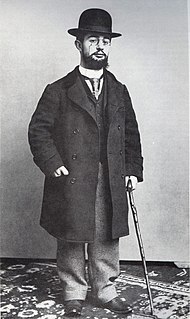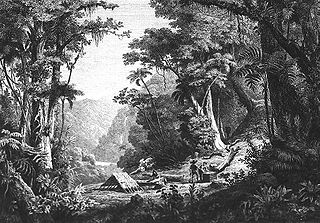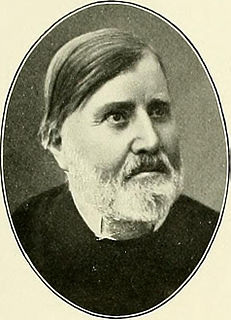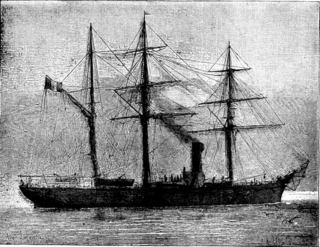
Comte Henri Marie Raymond de Toulouse-Lautrec-Monfa was a French painter, printmaker, draughtsman, caricaturist and illustrator whose immersion in the colorful and theatrical life of Paris in the late 19th century allowed him to produce a collection of enticing, elegant, and provocative images of the sometimes decadent affairs of those times.

Prof Paul Sabatier FRS(For) HFRSE was a French chemist, born in Carcassonne. In 1912, Sabatier was awarded the Nobel Prize in Chemistry along with Victor Grignard. Sabatier was honoured for his work improving the hydrogenation of organic species in the presence of metals.

Léon Louis Vaillant was a French zoologist. He is most famous for his work in the areas of herpetology, malacology, and ichthyology.

Jean-Joseph Benjamin-Constant, born Jean-Joseph Constant, was a French painter and etcher best known for his Oriental subjects and portraits.

Hugh Algernon Weddell was a physician and botanist, specialising in South American flora.

Ernest Saint-Charles Cosson was a French botanist born in Paris.
Philobrya meleagrina is a small saltwater clam, a marine bivalve mollusc in the family Philobryidae.

George Samuel Perrottet, also known as Georges Guerrard-Samuel Perrottet, Guerrard Samuel Perrottet, Gustave Samuel Perrotet [sic], and Samuel Perrottet, was a botanist and horticulturalist from Praz, in the commune of Vully-le-Bas, today Mont-Vully, canton Fribourg Switzerland. After expeditions in Africa and Southeast Asia where he collected plant and animal specimens, he worked in French Pondicherry, India, where he established a botanical garden. He took a special interest in plants of economic importance and was involved in the activities of acclimatisation societies in the various colonies of France. Many of his zoological specimens, sent to museums in France, were examined by other naturalists and named after him.
Henri Auguste Omont was a French librarian, philologist, and historian.

The era of European and American voyages of scientific exploration followed the Age of Discovery and were inspired by a new confidence in science and reason that arose in the Age of Enlightenment. Maritime expeditions in the Age of Discovery were a means of expanding colonial empires, establishing new trade routes and extending diplomatic and trade relations to new territories, but with the Enlightenment scientific curiosity became a new motive for exploration to add to the commercial and political ambitions of the past. See also List of Arctic expeditions and List of Antarctic expeditions.

The Muséum de Toulouse is a museum of natural history in Toulouse, France. It is in the Busca-Montplaisir, houses a collection of more than 2.5 million items, and has some 3,000 square metres (32,000 sq ft) of exhibition space. Its Index Herbariorum code is TLM.
Filhol is a surname. Notable people with the surname include:

Jean Octave Edmond Perrier was a French zoologist born in Tulle. He is known for his studies of invertebrates. He was the brother of zoologist Rémy Perrier (1861–1936).

The 1874 Transit of Venus Expedition to Campbell Island was an astronomical expedition by French scientists to observe the 9 December 1874 transit of Venus on subantarctic Campbell Island in the Southern Ocean some 600 km south of New Zealand. It was one of several such scientific expeditions from various countries sent around the world to observe the rare astronomical event.

Jean Pierre Bernard Édouard Filhol was a French scientist.

Jean-Baptiste Senderens was a French priest and chemist. He was one of the pioneers of catalytic chemistry, and a co-discoverer of catalytic hydrogenation, a process used commercially to make margarine.
Jean-Marie Despréaux or Louis Despréaux Saint-Sauveur, born on 20 December 1794 in Fougères and deceased on 27 November 1843 in Mexico City, was a French botanist.

Guillaume-Marie-Romain Sourrieu was a French prelate of the Catholic Church who was Bishop of Châlons from 1882 to 1894 and Archbishop of Rouen from 1894 until his death. He was made a cardinal in 1897.

Le Talisman was a French Navy sloop built at Le Havre in 1862 which was used for geological, biological and hydrological exploration in the Atlantic Ocean and Mediterranean Sea at the end of the 19th century. It first served as a communications vessel ("aviso"), and was both sail and propeller driven.

Jean-Baptiste Rames was a French pharmacist, naturalist, and geologist who worked on the geology of Cantal and produced a geological map that was exhibited at the Paris Universal Exhibition in 1878.




















